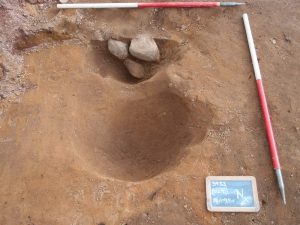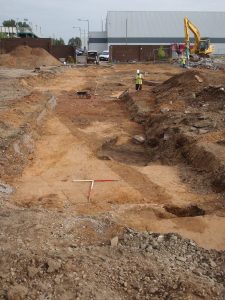Excavation preceding construction works at an area of a Roman fort annexe at Camelon, Scotland, revealed new features, among which is an ancient Roman oven.

The excavations preceded construction of a retail centre. The area excavated appears to be an annex of one of forts located at Camelon area. Small finds include 21 iron artefacts, such as socketed bolt head, an ox goad and a numerous hobnails, used to hold Roman shoes together. The socketed bolt head is said to be an item commonly recovered from Roman military sites. The ox goad has a spiralled shape with a protruding point and was used on the end of a wooden shaft to control oxen pulling a plough. The pottery found at the site dates to the first century AD, with a radiocarbon date between 41 BC and 116AD.

The 2000-year-old Roman oven consists of two interconnecting pits in the ground that together resemble a dug-out figure “8”. No ash or charcoal was found within either pits. The structure resembles other bread ovens which have been found on Roman military sites in Scotland. Experts suggest, that the its could have been used as part of a stone oven with stones in the pits at one time. The rocks, being portable were removed at a certain time.

Both military and civilian finds are evidence that beside the Roman army and its legionaries other people were present at the site as well, possibly working and trading with each other.
(after Live Science)